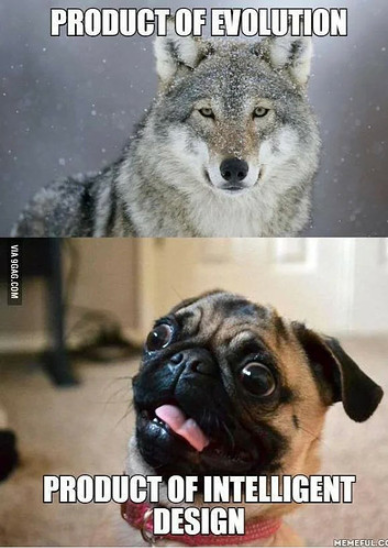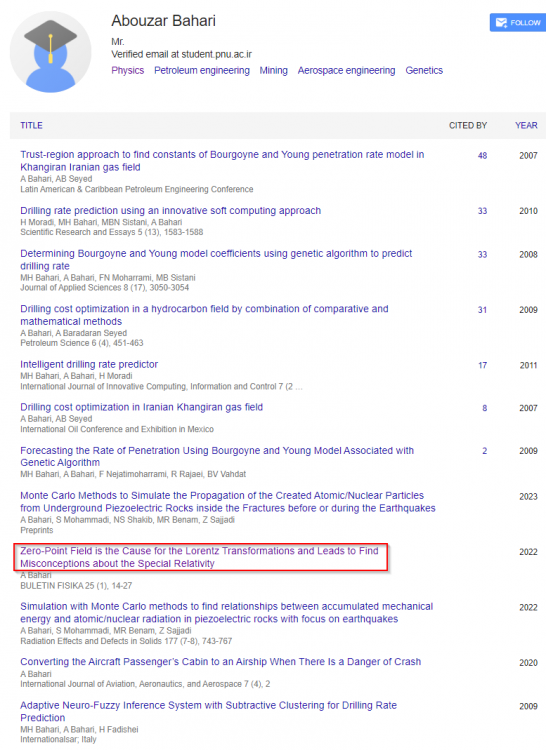-
Posts
1961 -
Joined
-
Last visited
-
Days Won
20
Content Type
Profiles
Forums
Events
Everything posted by Eise
-
I meant the percolating coffee espresso maker. And that can become quite hot, especially when I do not smell the coffee or hear it running through. Nope, I do not use alu foil for that I nearly never order food at home, and then mostly it is pizza Not in Switzerland, at least not what I use to buy My drinks are mostly in PET or glass bottles. And AFAIK, there is a small layer of some plastic in aluminium cans. But still, I am not a fanatic. Just a bit careful, when it is easy to do. Like Mistermack says:
-
Me too. I always make coffee that way. Just not aluminium, but stainless steel ones. Especially, already knowing about aluminium and Alzheimer's plaques, and then learned that aluminium is one of the lightest elements that are not needed in our bodies. I even got further, starting from the coffee grinder: (But then an antique one, and fastened on a stool.) And for the cappuccino, this for the skimmed milk: Yes, I believe in primitive technology, and doing something to 'earn' the coffee. It definitely is not labour saving... Sorry @mistermack.
-
Money saving???
-

Does the spacetime curvature according to Einstein really exist?
Eise replied to tmdarkmatter's topic in Speculations
It is a fact, that with a description in terms of spacetime curvature, we can make better descriptions, more encompassing, about gravity than with Newtonian gravity. That doesn't necessarily mean that spacetime 'really' is curved. It only means that with this model we can make more and better predictions, and a deeper understanding of phenomena in the 'strong gravity' regime, and on modelling the universe and its history. So why shouldn't we use GR instead of Newtonian gravity? It might also be interesting for you to know, that a formulation of GR without curved spacetime is possible, but then you should accept as a fact that gravity slows down time, and changes lengths of objects in gravitation fields, relative to observers that are far away from any gravitational field. According Kip Thorne (Black Holes and Time Warps) some calculations even become easier, than using the mathematical description with curved spacetime. And do not forget: if you think you have an alternative, you must show, mathematically, that you can describe everything that is already correctly described by GR. -
Just a side note... 10170 - 1080 is definitely not 1090. It is closer to... 10170. 10170 divided by 1080 is 1090. So a full board has 1090 times the positions of a 13 x 13 board.
-

How does human perceive the existence of universals?
Eise replied to B Milligan's topic in General Philosophy
Ah, of course you can specify a general triangle. But you cannot draw it. Take my example of 'the dog': using the definition of a 'general triangle', the question if it has a right angle cannot be answered ('the dog' being black or not). But from the definition we can be sure that the sum of the angles is 180o ('the dog' having 4 legs). I consider such use of the word 'triangle' as metaphoric speech. -

How does human perceive the existence of universals?
Eise replied to B Milligan's topic in General Philosophy
As said in the previous reactions, the general triangle exists as a concept. As you correctly notice, you cannot draw a 'general triangle'. So, e.g. a proposition about 'the triangle' means, that it should apply to all triangles, like 'the sum of the angles of a triangle is 180o'. To expand a little on 'concepts': naive ideas about language are that the words refer to things in reality. But that is not the case: words refer to concepts. If I ask you the question 'How many legs has a dog?' you have no trouble to give the correct answer. But if I ask you to visualise a dog, and then followup with 'Is it black or not?' I do not know what you will answer, because you pictured a specific dog, not 'the general dog'. The 'general dog' is not black, not brown, not white etc. But the 'general dog' has four legs. Without concepts, language would be impossible, and with that general propositions, and with that on its turn, science. Concepts are not naturally given, so in different languages, concepts might differ too. And in science new concepts are developed again and again. Concepts are not true or false: they are useful or not. If they allow us to describe processes, ideally as a law of nature, they are useful. -
And do not forget that Freud from his side was heavily influenced by Schopenhauer. And talking about Freud, I miss philosophers from the Frankfurt School (Adorno, Horkheimer, Benjamin, Fromm, Habermas) who were also influenced by Freud.
-
Better late than never, sorry for waiting so long. I fully agree. I would even take it one step further. 'Interactions', I would say, are causal relationships. The natural sciences look at nature through 'causal spectacles'. A phenomenon is explained, at least for the moment, if we have a causal explanation. Of course, it may turn out later, that the explanation is not correct, or not complete, when we get new experimental data, or more precise background theories. If we (think we) know all possible causal relationships that an entity has, then we could say we know this entity. E.g. if we know all possible causal connections that an electron can have, then we could say we know what an electron is. To try to 'look behind the scenes' what an electron 'really' is, is a scientific empty question. It is at most an ontological question. Yeah, I think this distinction is still useful, especially to describe the limitations of quantum theory: we encounter there a limit where we have no causal explanation anymore. There is no one to one connection with a cause and its precise effect. So as I expressed elsewhere, the 'wave-function' is itself not measurable, it only allows for statistical predictions: it is the limit of what we can say about nature. The 'electron-as-a-thing-in-itself' disappears behind its statistical, causal behaviour. Scientifically we cannot say more. You confuse critics of the modern 'main stream physics', with people who study the fundamentals of physics. There are many people engaged in this topic. Just google 'philosophy of physics'. And it also seems you forgot, in your previous reaction, how much was discussed by the 'fathers of QM'. I agree with both articles linked in this thread: the one of Katie Mack, with which Swansont started the thread, and the Mermin article ("What's bad about this habit").
-
But cameras work (and microscopes, and telescopes, and...), designed by people based on knowledge and experience, so obviously your understanding is wrong. No, it doesn't. Learn some geometrical (or ray) optics first.
-
Hmm, @Lorentz Jr, I am wondering what for you a good, physical explanation is. Can you give a few examples of basic physical laws that count for physical explanations for you? Metaphysical? What do you mean? How nature is behind the physical laws? But yeah, that would be metaphysics, not physics, wouldn't it? So giving a few examples could help: for me these are more or less the same.
-
Why would you get uncivil? Give the arguments. I think we are all civil here, aren't we? I am especially curious why you think it needs 'a real physical effect', i.e. imply that there must be a causal explanation. I notice sometimes people are disappointed when I explain e.g. time dilation: people miss a 'mechanism'. This is the same problem Lorentz and Poincaré had, if I understand history correctly: Lorentz e.g. hypothesised that the ether is expressing a pressure on objects moving in it (that would be a 'dynamical solution', and I suppose what you call 'a real physical effect'); Poincaré never got rid of the idea that there must be a preferred inertial frame, like the ether, but there is no method to find out with any physics experiment. But long since then, the physics community opted for Einsteinian relativity. It explains all relativity effects without reference to an ether. Ockham's razor at work: when the ether does not contribute anything to an explanation, we can drop it.
-
Yep. And in the twin 'paradox' all observers agree on the spacetime distance in Minkowskian spacetime. This interpretation of Markus' example lets me doubt your sincerity. You are confused about causation. Without diving too deep, causation implies: the cause precedes its effect cause and effect are located closely to another The first is a criterion in time, the second in space. You cannot apply 'causation' to time and space themselves. Proper time?
-
I think all observers agree that the circumference of my ellipse is smaller than the circumference of the circle. I know, it is an analogy, and maybe it does not apply exactly, but it looks quite similar to me: following 'the path' of the circle, it is longer than 'the path' of the ellipse. In the twin paradox the paths through spacetime differ, and with that their lengths.
-
Nope, not quite. A 'mechanism' supposes physical, causal relationships. that means this mechanism exists, and all observers agree on it, no matter in what coordinate system, moving or in a gravitational field, independent of direction or orientation etc etc. Of course one might have to do a few coordinate transformations, so that all observers agree on the mechanism. But what if the coordinate transformation explains the observations without any reference to physical, dynamic processes? If I look at the top of a glass from an angle, I see an ellipse, instead of a circle. Must I now look for a 'mechanism', i.e. a dynamical law, that distorts the circle to an ellipse? Or does the geometrical explanation suffice? Special and general relativity show that time dilation, length contraction etc, and gravity can be explained geometrically as coordinate transformations, assuming 4-dimensional (curved) spacetime. Under this assumption there is nothing left to explain dynamically. The geometric explanation works wonderful well, as e.g. also MigL notices: If the geometric explanation works, why would we even need a 'mechanism'? I think I understand why you took 'Lorentz' as your nickname. What is a 'real physical geometry'? Wouldn't that be the geometry that turns out to be the most useful, i.e. helps most to generalise basic laws of physics? True. But it can turn out to be superfluous.
-
I am a relativity amateur, but this one is even clear to me: you should of course use the same dimension for velocity for v and c: both in m/s, or both in km/h. But if you set c = 1, then you should express v as a fraction of c. This is such a beginner's error, that I don't have to take the rest of your exposés seriously.
-
The explanations are more or less the same: both say that special relativity is valid for comparison of time (and distance) between two inertial frames only. But in both examples there are three inertial frames: in both, we have the 'stationary frame' of earth and star, that is frame 1 in both we have a traveler heading for the distant star, that is frame 2. However, in Don Lincoln's example this traveler just goes on traveling in the same direction, in the first example the twin turns around back to earth The 3rd frame in the first example is that from the returning twin, in the second it is the other traveler that flies in the direction of earth, and passes the star exactly at the moment that first traveler also passes the star. So in both cases, there is no inertial frame for a) the travelling twin, there are two, and in b) we have two inertial frames for two travelers from the beginning. But, if we neglect the acceleration at the turning around of the twin, the argumentation is the same, because we use the same inertial frames.
-
Or Ethan Siegels blog, 'Starts with a bang'.
-
I can't see the deadlock video('Something went wrong. Please refresh'). Could you post your diagram? I assume you understand deadlocks in one single RDBMS, but reading in itself usually does not lock any rows (except SQL Server when you are not running it in 'Read Committed Snapshot Isolation Level'. For Oracle this is the default isolation level. However, in a distributed transaction between 2 databases, the whole transaction must be prepared until the last 'commit readiness', in such a way that so to speak only one bit must be sent, meaning 'commit now'. This reduces the time gap that can occur via the network. Nothing is allowed to interfer in this time gap. Does that already help? Otherwise, be more specific. You diagram might help.
-

Philosophical Implications Of Infinite Parallel Multiverses
Eise replied to Intoscience's topic in General Philosophy
Frequencies of what? Personally I think, no. The many worlds theory is based on the metaphysical assumption that the wave function is real, and never collapses, but instead splits into so many universes as there are possible outcomes of a quantum measurement. But as there is no possibility to know anything about all these 'other worlds' (except the one you find yourself in), the many worlds idea cannot be empirically tested. In other words, it is just an interpretation of QM. I belong to the 'epistemological camp': the wave function is not real, but with it we can calculate the probabilities of possible outcomes of a quantum measurement. We have no access to any deeper reality below that. Said in other words: with the wave function we have reached the limit of what we can know. Even an explanation of why the wave function works is then impossible: for that we would have to derive it from precisely this deeper ontological level to which we have no access. That said, interpretations can have heuristic value. Without pictures of what is 'really going on', it is difficult to think about QM. So interpretations can help to develop new ideas. As an example, Bell came to his theorem by thinking about Bohm's 'guide waves' theory, which is also an interpretation of QM. -
Then how do you explain that for the train frame the photons go vertical, but for you from the ground frame, according to you, the photons arrive back at the laser when the train is at the railway crossing? If you think a slant is needed, i.e. the observer/experimenter on the train must point the laser a bit forward, from the train frame it would miss the small mirror. Your viewpoint is logically inconsistent. There is no way the light clock would work for different inertial frames at the same time, including the rest frame of the light clock (the train). And I am shocked you are so sure about your viewpoint, where you obviously have no idea what vectors are, and how one adds them. But obviously you are not here to learn anything. I won't, because I am an 'amateur physicist'. But I am pretty sure the example of the wire and the length contraction is very simplified. I think it does nothing more than give a some intuition how special relativity, electricity and magnetism are related. E.g. from the example of the wire, I do not see how the magnetic field would be circular around the wire. Maybe some of the real physicists here can give a short comment on that? I have some notion of where the limits of my knowledge are. You obviously don't. You are saying that a theory that is already accepted and used for a century, and is basic to nearly all of fundamental physics, is wrong. Here is a list of empirical tests, that all confirm special relativity is correct. About the wire example, ChatGPT says the following: @swansont: is ChatGPT right?
-
So here lies your problem. If the photons propagated also vertical in the ground frame, they would stick to the tree for you. The clock would not work anymore in the train frame. Of course now you will say that this can only be solved by pointing the laser in another, slanted direction. But why would the observer/experimenter do this? For him the photons return at the laser at the moment he passes the railroad crossing. That is my point 3 above, and you agreed with that. Furthermore the observer/experimenter on the train cannot do it for you in the ground frame and for the observer with a speed of 0.4c in the same direction as the train at the same moment. Which slant should he choose so you both see the light clock still working, because, as you agreed with, observing doesn't change anything (point 2).
-
@Otto Nomicus: please go through my points one by one. So we can see better where our arguments deviate.





